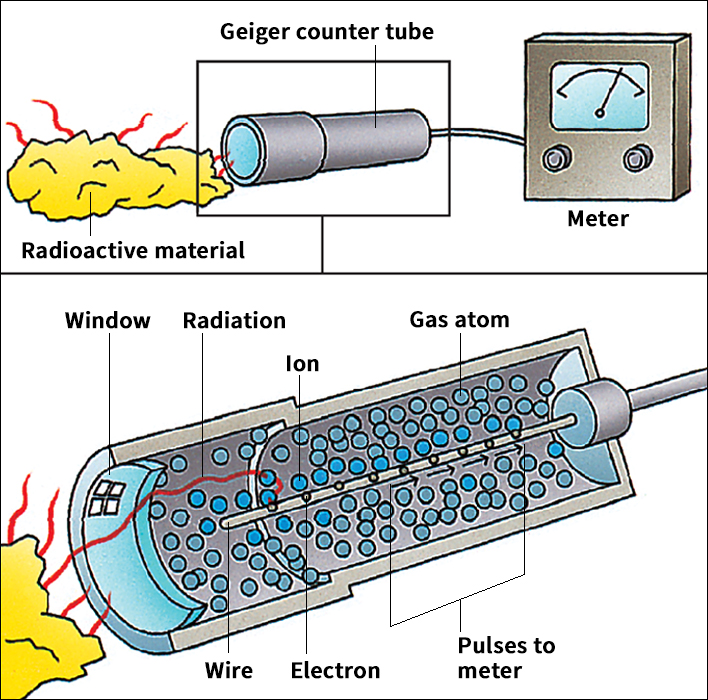Geiger counter, also called Geiger-Muller counter, is an instrument that detects forms of ionizing radiation. Such radiation includes gamma rays and alpha and beta particles. Prospectors use Geiger counters to find uranium, thorium, and other radioactive elements. Geiger counters also are used in science and industry, chiefly in studies involving radioactive substances called radioisotopes (see Isotope (Uses of radioisotopes) ).

A typical Geiger counter has a fine wire stretched along the axis of a cylindrical metal tube. This central wire and the metal wall of the tube serve as electrodes. An electronic circuit keeps the wire at a positive voltage of about 1,000 volts, thus creating a strong electric field near the wire (see Electric field ). Most Geiger counter tubes contain a readily ionizable gas, such as argon mixed with a trace amount of ethyl alcohol vapor.
Loading the player...Geiger counter detector signal
Many Geiger counter tubes have a window of plastic or mica film, through which alpha and beta particles can enter. Unlike gamma rays, these particles cannot penetrate the wall of the metal tube. Radiation that enters the tube collides with gas atoms, causing them to become ionized. This process releases electrons. The electrons spread along the wire, generating an electric pulse. The pulse is amplified electronically and is counted by a meter or some other type of registering device. After each pulse, the counter has a recovery period of about 1/10,000 second, during which the instrument cannot detect radiation.
A Geiger counter can detect low-energy radiation because even one ionizing particle produces a full pulse on the central wire. However, the instrument cannot measure the energy of a particle because particles of different energies generate pulses of the same size.
Hans Geiger, a German physicist, invented the Geiger counter in 1912. He and the German physicist Walther Muller improved its design in 1928.
